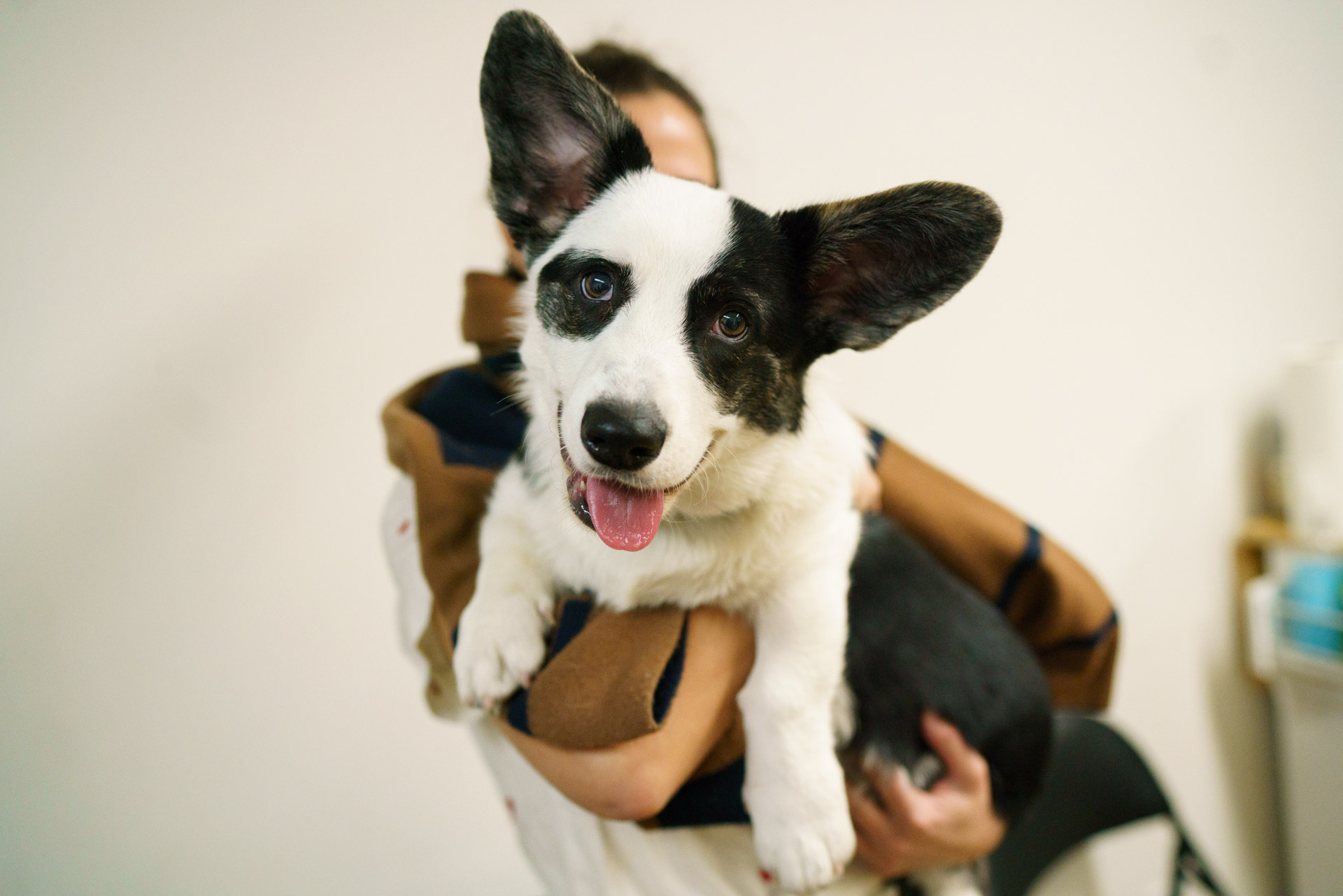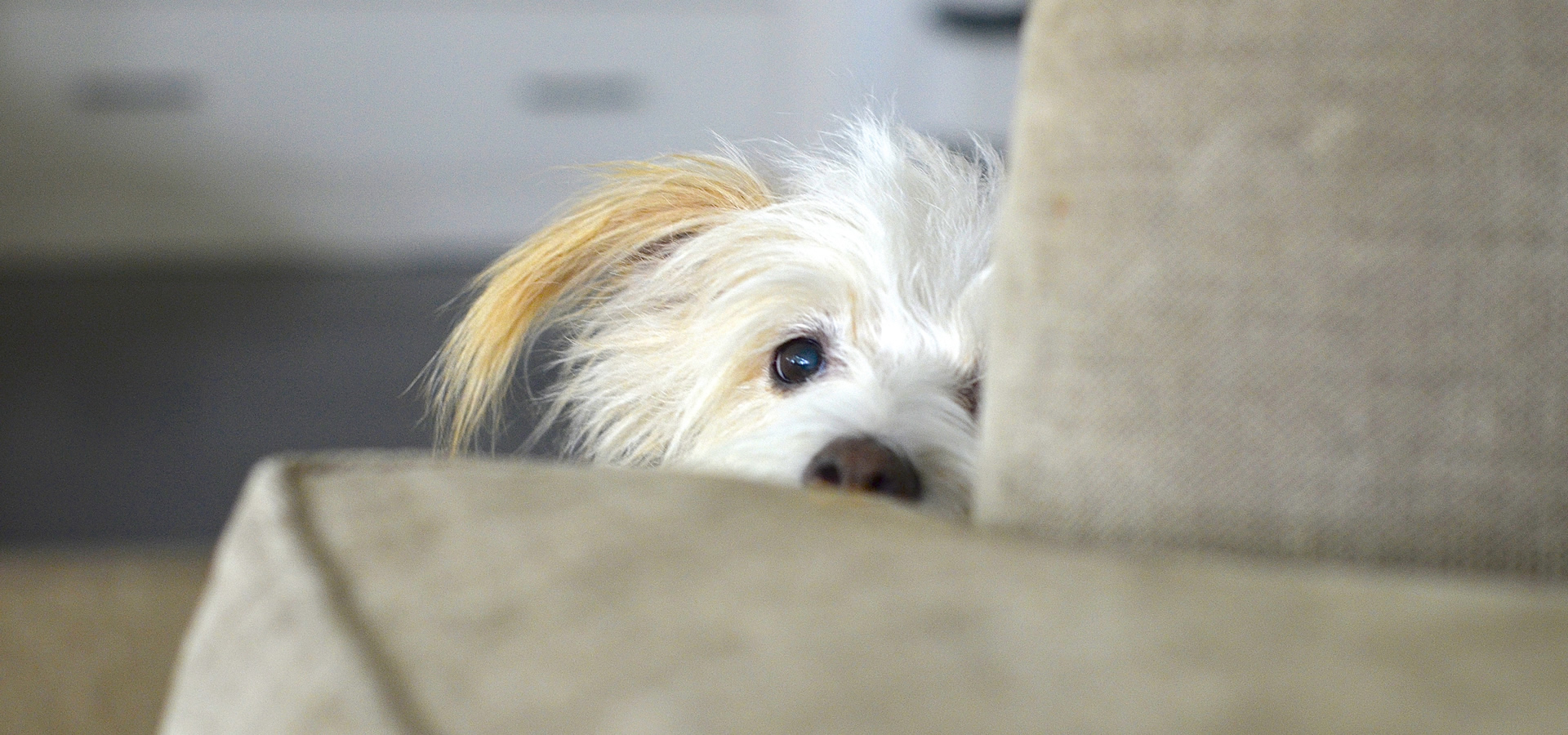
How to Deal with Dog Growling When Asked to Get Off the Bed
It is no surprise that people are distraught and perplexed when their otherwise lovely dog behaves in ways they deem egregious, specifically when they growl at or bite people. A gentleman with a 3 year-old Jack Russell Terrier, Lido, contacted me regarding his dog’s tendency to growl at him.
He explained that this happened only in the evening and was curious why his dog seemed relatively mild mannered during the daytime hours, but switched into another state of mind altogether in the evenings. After a bit of investigating it became clear that Lido’s night time growling had more to do with the fact that the evenings were when he was most likely to be in the situation that seemed to trigger these incidents. That is, Lido’s growling was limited (for the time being anyway), to those times when he was resting on the bed and his owner came in to go to sleep.

The dog guards the place
Guarding people, places and things is normal for dogs (and for most people!) and growling is a dog’s way of giving a warning. The aggressive display may stop with a growl (especially if the perceived threat goes away) or it may be a precursor to snapping and biting. While all of this (growling, snapping, and biting) are normal behaviors for dogs, that doesn’t mean they are also acceptable for a pet dog. Growling (at any time of the day!) and what it might lead to clearly do not bode well for a dog to live a long and happy life with his or her family. Therefore, this is a serious issue and usually requires the personal attention of a professional trainer.
Like many dogs, Lido was a little confused about his place in the world. Growling at his people, or any other person for that matter, is sort of like a business owner screaming at their clients. Making clients happy is how you run a successful business, pay my rent, utilities and food bills. It is how a business owner survives, and they know it. Likewise, if Lido clearly understood that his people are the key to his survival (as they provide the food, water, toys, attention, etc.) then it would be much less likely that he would risk upsetting them (and therefore not benefitting from their ability to share their resources) by behaving aggressively towards them.
How to deal with a dog growling at you
The old fashioned way of dealing with this problem would be to fight fire with fire. That is, to physically and verbally punish Lido when he growled. While this may work sometimes, more often than not this makes the problem worse. It may become a battle of human hands and voice against dog teeth! A fight that is clearly favored towards the dog and to the failure of the canine/human relationship. Furthermore, punishing a dog for growling is a sure fire way to eliminate a very valuable warning signal. I suspect just about everyone would prefer a dog growl at them rather than bite (if you had to choose!). If you punish a dog for growling, odds are you aren’t getting rid of the underlying issue (i.e. tension, stress, etc. around the stimulus that caused the growling). All you are doing is teaching the dog to bypass the warning phase (the growl) and leap right to the next level of response to a perceived threat (lunging, snapping and/or biting).
It is much smarter to use your brain to train rather than brawn and with that in mind I set a two step plan for the family:
1. Get Lido on a Learn to Earn Program: Rather than give Lido free access to all the things he wants in life (food, toys, your attention, access to furniture, going for walks, etc.) I asked his family to get control of all of these things and have Lido earn what he wanted (sort of like we all do when we go to work for a paycheck).
2. I asked him family to teach Lido a few behaviors (we started with sit, down and hand targeting) and to ask him to do one of those before he gets anything. This is a vital part of teaching Lido to have a respectful, compliant and enriching relationship with his people by reminding him how important they are and therefore how silly it would be to be anything but super sweet to them! In this way Lido would be gently guided towards a more compliant state of mind and more mannerly and safe behavior.

In addition, I asked them to keep Lido on a leash at all times when they are home and supervising him. This way they can manage him safely and effectively. Specifically, by keeping him off the bed except for those times when they are working on teaching him to wait to get on the bed until given permission and then to get off the bed when requested. As a way of employing the Learn to Earn approach in regards to bed privileges, we taught Lido by keeping him on leash and preventing him from jumping on the bed, waiting for him to sit next to the bed, highlighting or marking that moment by saying ‘yes’ and then patting the bed for him to jump up. Lido is developing a wonderfully rapid and reliable response to being asked to get off the bed as a result of lots of 3-5 minute on leash training sessions where we ask him to get off and then reward him by tossing a piece of his dry food on the ground as a reward.
Getting control of Lido’s issue with guarding the bed is well under way and as an added benefit all of the effort will help decrease the chances that Lido’s tendency to guard will generalize to other things.
Explore Our Dog Training Courses
Educate your dog with Andrea Arden and her team.
New York | Los Angeles | Connecticut
Share
- Group Classes
- Private Lessons
- Virtual Training
- Puppy Play Groups
- Puppy Training
- Articles & Advice

